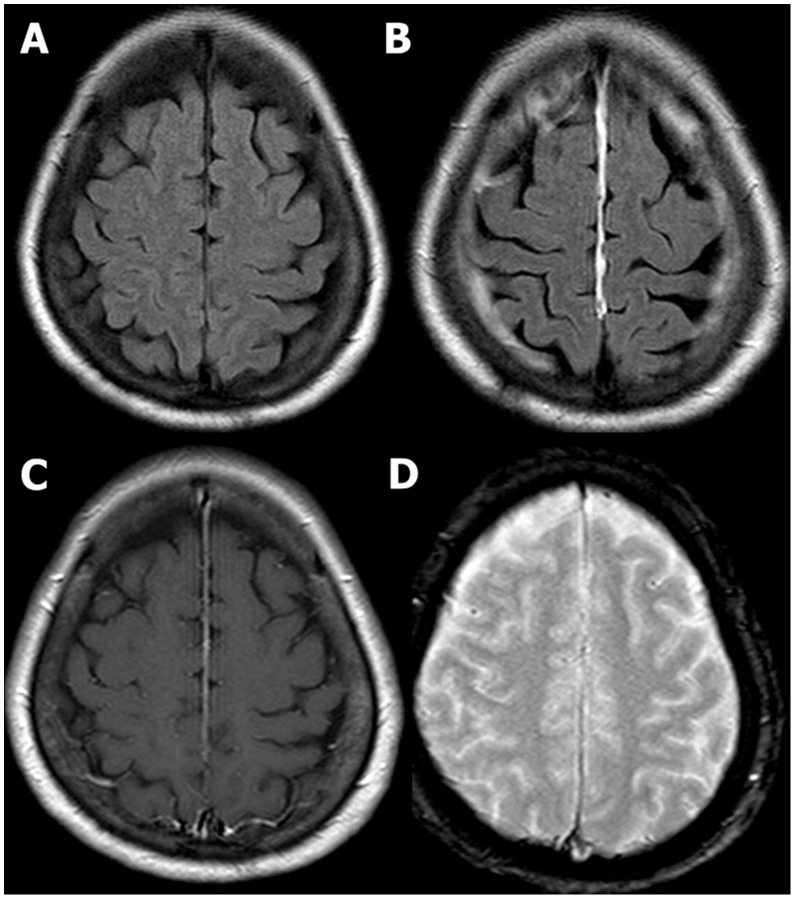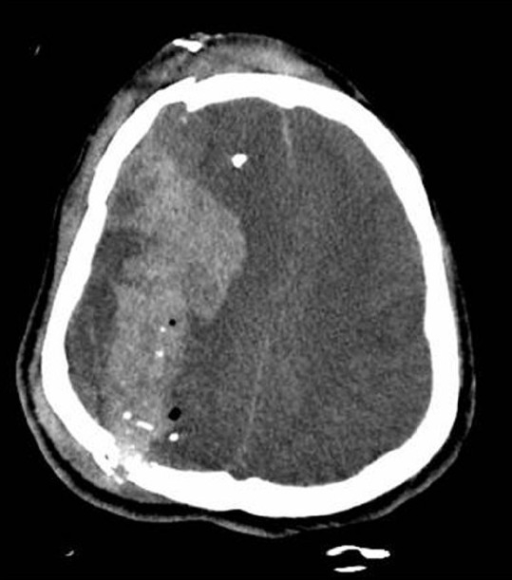Playlist
Show Playlist
Hide Playlist
Children under 16: PECARN & Traumatic Brain Injury (TBI)
-
Emergency Medicine Minor Head Injury.pdf
-
Download Lecture Overview
00:01 Now, what about kids? I already told you that the Canadian C-Spine rules excluded anybody under the age of 16. 00:08 And there’s been a lot of interest among pediatric trauma specialists in limiting the exposure of children to radiation. 00:16 We don’t wanna take young brains and irradiate them unnecessarily 'cause that can lead to downstream complications like increased rates of cancer. 00:25 So the PECARN network which stands for Pediatric Emergency Care Applied Research Network came up with a decision rule. 00:32 There are two separate guidelines. 00:34 One for children over two and one for children under two. 00:37 And they’re both highly sensitive with specificity that’s comparable to the Canadian rules. 00:43 So basically, it’s the pediatric equivalent of the Canadian head CT rules. 00:50 The rules only apply to kids who have GCS of 14 to 15. 00:55 So if the child has a GCS of 13 or less, you have to go ahead and CT them. 01:00 So this is only for kids with either normal GCS' or one point off. 01:05 If they have two or more points off, they have to get a CAT scan. 01:09 The PECARN guidelines for kids under 2 basically tell us that if the GCS is 14, if the child is altered in any way, or if they have signs of skull fracture, they should go ahead and get CTed because they have a significant risk of having a traumatic brain injury, 4% By contrast, if they don’t have any of those findings, you then look for further symptoms. You search for occipital or parietal or temporal scalp hematoma. You also ask about loss of consciousness that was equal or greater than five seconds, about the severity of mechanism of the injury, and you ask the parent if the kid is acting normally. If you get a yes on any of those things you move on and see if there are multiple findings, or a worsening of symptoms, or if the age of the kid is less than 3 months. Again if yes a C T scan is recommended. if you get a no in this step observation in hospital is recommended. Although, in most developed world settings where CAT scans are readily available, these kids are typically gonna go ahead and get head C T. 02:20 For kids whose answer is no to all of those questions, the risk of significant TBI is less than 1% it’s actually less than 0.1% it’s very, very small, and there’s no indication for CT. 02:34 So these children should not be exposed to the radiation and discomfort associated with the scan. 02:39 They should just be permitted to go on about their business. 02:41 Over the age of two, the guidelines are similar. 02:46 Here, we have for high risk features, GCS of 14, altered mental status or basal or skull fracture. 02:53 If you suspect any of those things, go ahead and scan. 02:56 If you get a no in the first step, move on and look for a loss of consciousness, or vomiting, or the severity of mechanism of the injury or if there is a severe headache. If you have multiple of those findings or a worsening of symptoms then a C T scan is recommended. If not then an observation is recommended. 03:17 But if they don’t have any of those findings again, less than 0.1 percent risk of having a head injury, no scan is warranted. 03:25 If you do go ahead and get a scan because your patient required it based on a validated decision rule, you wanna know of course, if the scan is positive and negative. 03:36 So for positive scans, there are specific diagnoses based on the findings on the scan and your patient’s gonna be managed according to those specific diagnoses which we’ll talk about in more detail in another lecture. 03:48 If the scan is negative, then your diagnosis is mild traumatic brain injury which in conventional language in the U.S. is a concussion. 03:58 So what are we gonna do for these patients who have concussion? Well, it’s really important to remember that “mild traumatic brain injuries” are not actually all that mild. 04:07 They can cause significant neurologic sequelae in both a short and long term, and it’s really important to recognize the significance of these, educate our patients about them, and manage them appropriately. 04:20 So patients who have concussions should expect some degree of slight cognitive impairment for several weeks after the event. 04:29 This is not uncommon. 04:30 But it’s important to indicate that this impairment should be slight. 04:34 They might have difficulty concentrating. 04:37 They might have difficulty with memory. 04:38 They might be irritable or anxious about things that wouldn’t normally irritate them or make them anxious, but they shouldn’t be really significantly impaired. 04:49 If they can’t complete their normal daily activities. 04:53 If they’re really forgetful. 04:55 If they’re really not able to perform basic tasks. 05:01 Then, we should be concerned that a more significant injury was missed. 05:05 These patients will often have a lot of symptoms. 05:09 So headaches, nausea, insomnia, irritability, these things are all very, very common and just even letting the patient know to expect those things and to understand that they are common and they are expected is really helpful. 05:22 And then, to the extent that we can, we should try to control those symptoms, particularly insomnia, because sleep disturbance can really exacerbate the cognitive impairment that patients have following these injuries. 05:34 We wanna prescribe brain rest for our patients and I think a lot of us might enjoy having brain rest prescribed from time to time. 05:42 What that really means is that patients should not be engaged in really challenging mental tasks. 05:49 So this is a time to tell your patient, “Hey, you probably don’t wanna be taking your MCAT or your USMLE exam while you’re recovering from a mild traumatic brain injury. 06:01 Go ahead and delay that exam.” This is not the time to pick up another AP course in school. 06:07 This is not the time to start a really challenging new job. 06:10 You wanna give yourself time to heal before you take on really complicated cognitive tasks. 06:16 For athletes, we wanna make sure that they don’t just jump back on the field and return to play right away after their injury. 06:24 They should have a graded return to play where they can start working out with the team for short periods and then longer periods before they compete. 06:33 And they definitely should be protected from recurrent injuries because repeated traumatic brain injuries, especially among athletes are actually associated with significant long term neurologic sequelae. 06:44 So we wanna make sure that we’re telling the patients, “Hey, you know what? If you’re engaged in a contact sport, you can’t get back on the field this season, because we don’t want this to happen to you again before you’ve recovered from the first one.” The other thing you wanna think about is what caused the injury in the first place. 07:01 Now, it might have been something that’s not preventable like a motor vehicle collision or a sports injury. 07:06 But especially in our elderly patients, sometimes, these events are caused by falls, and we wanna think about what caused the patient to fall in the first place. 07:14 Do they have some sensory difficulties that have rendered them imbalanced? Do they have safety issues in their homes? We wanna do anything that we can to prevent them from having another incident just like this one. 07:26 So don’t just stop asking questions once you decide that the patient hasn’t had a major brain injury, think about what got them into this situation and what you can do to keep it from happening again. 07:37 And then lastly, we wanna make sure that all of our patients have follow-up. 07:41 That they have primary care providers who they can link up with if they are having significant symptoms down the line and need additional testing or treatment. 07:50 So take home points on traumatic brain injury. 07:55 One, most of them are mild but even mild ones can cause significant symptoms and we wanna take them seriously. 08:02 GCS is the most widely used tool to stratify severity and it’s very helpful for determining need for imaging in our patients. 08:12 History and physical exam is gonna give us a lot of clues as to whether or not your patient needs to be imaged. 08:18 We have validated decision rules that can guide our decision about whether or not to obtain CT scans. 08:24 But I do wanna emphasize, these rules don’t substitute for our own clinical judgement. 08:29 So if you’re really, really worried about a patient, even if they don’t meet the criteria for scan, you should go ahead and image them. 08:35 You always wanna make sure that you feel comfortable with the clinical decisions that you’re making. 08:40 And then, mild traumatic brain injuries can be managed conservatively, but you do wanna make sure to prepare these patients for downstream sequelae and let them know what to expect, and keep them from hurting themselves again. 08:54 Thank you very much. 08:56 I hope this was helpful.
About the Lecture
The lecture Children under 16: PECARN & Traumatic Brain Injury (TBI) by Julianna Jung, MD, FACEP is from the course Trauma (Emergency Medicine).
Included Quiz Questions
What is the diagnosis for a negative CT scan result in a child who underwent a CT scan according to the PECARN guideline?
- Mild traumatic brain injury
- Normal brain findings
- Moderate traumatic brain injury
- Contusion
- Severe traumatic brain injury
Which of the following statements regarding the management of mild traumatic brain injury is INCORRECT?
- No cognitive impairment is expected in mild traumatic brain injury.
- It is important to prevent re-injury.
- Management includes symptom control.
- Athletes should have a graded return to play.
- Ensure adequate follow-up of patients.
What is the estimated percentage risk of brain injury for a child below two years old with head trauma who does not show any neurologic deficits and does not have a scalp hematoma?
- <1 %
- 4%
- <10.5%
- >2.5%
- 5%
Which of the following statements regarding the PECARN guideline for children with head injury is INCORRECT?
- The PECARN guideline applies to children with GCS of 13 to 15.
- A child less than 2 years old with altered mental status definitely needs a CT scan.
- A child less than 2 years old with a GCS of 14 has a 4% risk of having traumatic brain injury.
- A child greater than 2 years old with a GCS of 15 but complains of severe headache may be placed under observation if a CT scan is unavailable.
- A child greater than 2 years old without any neurologic deficits and no physical signs of trauma has only a <0.05% risk of having traumatic brain injury.
Customer reviews
5,0 of 5 stars
| 5 Stars |
|
5 |
| 4 Stars |
|
0 |
| 3 Stars |
|
0 |
| 2 Stars |
|
0 |
| 1 Star |
|
0 |





